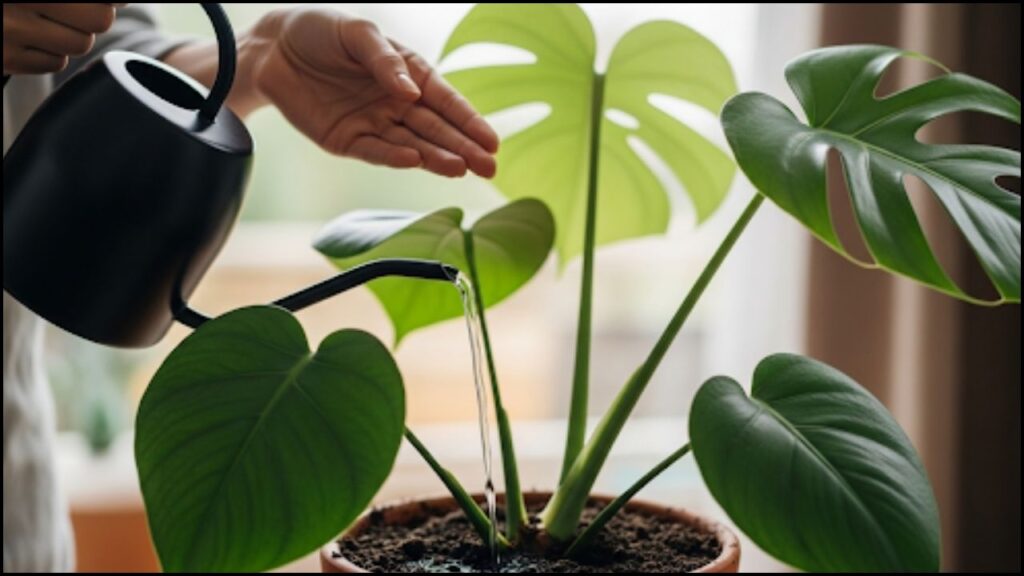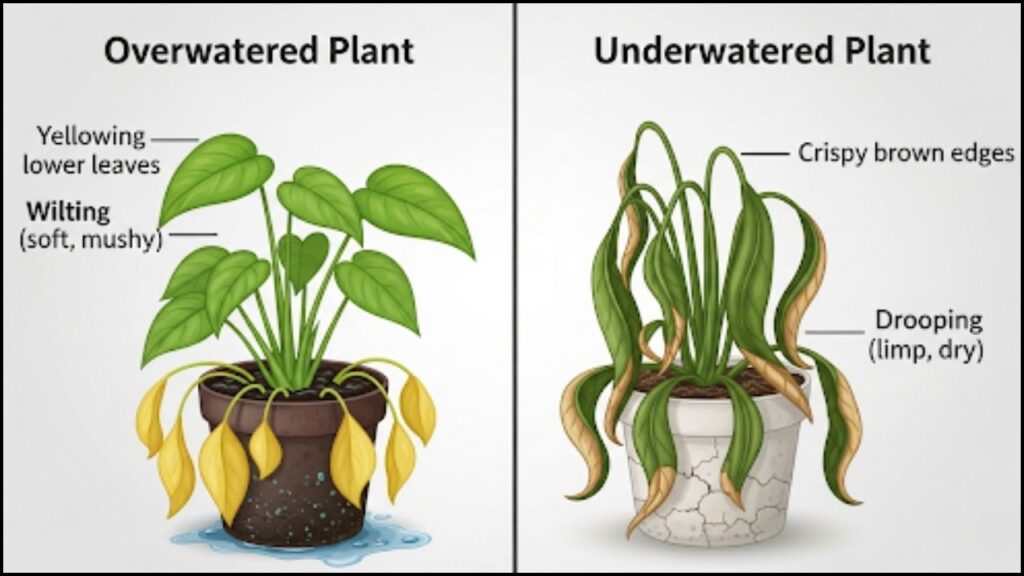
For millions of new and experienced plant owners, the simple act of watering can feel like a perplexing puzzle. Horticultural experts report that improper watering is the leading cause of houseplant failure globally. The key to watering indoor plants correctly, they advise, is abandoning rigid schedules and instead learning to read the individual needs of the plant and its environment, a practice that prevents the most common plant ailments.
This guide synthesizes advice from botanists, university extension programs, and professional horticulturalists to provide a clear, fact-based approach to mastering this fundamental aspect of indoor gardening.
Key Insights on Houseplant Watering
| Key Principle | Detail |
| Check Soil First | The most reliable method is feeling the top 1-2 inches of soil. If it is dry, it is likely time to water. |
| Overwatering is a Greater Risk | Excess water suffocates roots, leading to root rot, a condition far more difficult to reverse than underwatering. |
| Water Thoroughly | When you do water, saturate the entire root ball until water flows freely from the drainage holes. |
The Core Principle: Ditch the Weekly Schedule
The most common mistake in plant care is adhering to a strict “water every Sunday” routine. This approach fails to account for critical variables that affect a plant’s water consumption, including light, temperature, humidity, pot size, and time of year.
“A plant’s water needs are dynamic, not static,” said Dr. Amelia Grant, a botanist and author of “The Urban Gardener’s Handbook.” “A snake plant in a low-light corner will use far less water than a fiddle-leaf fig in a bright, sunny window. A fixed houseplant watering schedule treats them as identical, which is a recipe for disaster.”
Instead of a calendar, experts universally recommend a physical check. The most effective method is the “finger test”: insert your index finger into the soil up to the second knuckle. If the soil feels dry at your fingertip, it is time to water. If it feels moist or cool, wait a few more days and check again.
Understanding the Dangers of Overwatering Plants
While a wilting, thirsty plant is a clear sign of distress, the signs of overwatering can be more subtle and are far more dangerous. Overwatering plants is the primary cause of root rot, a fungal disease that thrives in waterlogged soil where roots are deprived of oxygen.
“Roots need to breathe,” stated a recent guide from the University of California Agriculture and Natural Resources. “When soil pores are constantly filled with water, roots are effectively suffocated. This creates an anaerobic environment perfect for fungi like Pythium and Phytophthora to attack and decay the root system.”

Signs of overwatering include:
- Yellowing leaves, especially lower ones, that fall off easily.
- Wilting, despite the soil being wet.
- A soft or mushy base of the stem.
- The presence of fungus gnats or a moldy smell from the soil.
If root rot is suspected, experts advise removing the plant from its pot, trimming away any black or mushy roots with sterilized scissors, and repotting in fresh, well-draining soil.
Best Practices and Plant Care Tips for Watering
Once it is determined a plant needs water, the technique used is also crucial. Following proven methods ensures the entire root system is hydrated, promoting strong, healthy growth.
Water Thoroughly, Not Lightly
Shallow, frequent watering encourages a weak, shallow root system. The correct method is to water until it flows from the pot’s drainage holes. This ensures the entire root ball is saturated.
“You want to mimic a natural rain shower,” Dr. Grant explained. “Pour water slowly and evenly over the soil surface until you see about 10-15% of the water drain out. Then, and this is critical, discard that excess water. Never let a plant sit in a saucer of water for an extended period.”
The Importance of Proper Drainage
Proper drainage is non-negotiable for most indoor plants. Always use pots with drainage holes at the bottom. If using a decorative pot without holes (a cachepot), keep the plant in its plastic nursery pot and place that inside the decorative one. Remove it for watering and allow it to drain completely before returning it.
Water Quality Considerations
For most common houseplants, tap water is sufficient. However, if your municipal water is heavily treated with chlorine or fluoride, allowing it to sit out overnight can help some chemicals dissipate. Plants sensitive to mineral buildup, such as calatheas and carnivorous plants, may benefit from distilled or rainwater.
Adjusting for Seasons and Dormancy
A plant’s water needs change dramatically with the seasons. During the active growing season of spring and summer, when days are longer and temperatures are warmer, plants photosynthesize more and use water more quickly. Conversely, most plants enter a period of dormancy or slower growth in the fall and winter. During this time, their water requirements decrease significantly. It is essential to reduce watering frequency during these months, checking the soil carefully and allowing it to dry out more thoroughly between waterings.
Continuing a summer watering routine into the winter is one of the most common paths to overwatering plants. As a final piece of advice, horticulturalists suggest that when in doubt, it is almost always safer to wait another day or two before watering. An underwatered plant will typically rebound quickly once hydrated, while a chronically overwatered plant may not recover at all.
Mastering the Art of Watering Indoor Plants Correctly for a Thriving Home Garden
